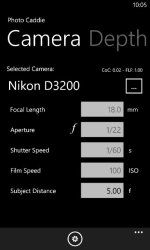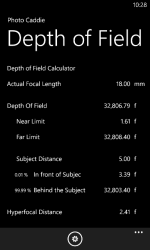bpchia
New member
This is my first post, hello to everyone.
I am wondering if there is a mode or setting in which the D600 will analyse the scene and determine the focal lengths of all the faces in a scene, and then select the MINIMUM aperture that will allow all faces to be in focus?
The situation is where I want to use the fastest shutter possible while still having all faces in focus.
Many thanks.
I am wondering if there is a mode or setting in which the D600 will analyse the scene and determine the focal lengths of all the faces in a scene, and then select the MINIMUM aperture that will allow all faces to be in focus?
The situation is where I want to use the fastest shutter possible while still having all faces in focus.
Many thanks.


